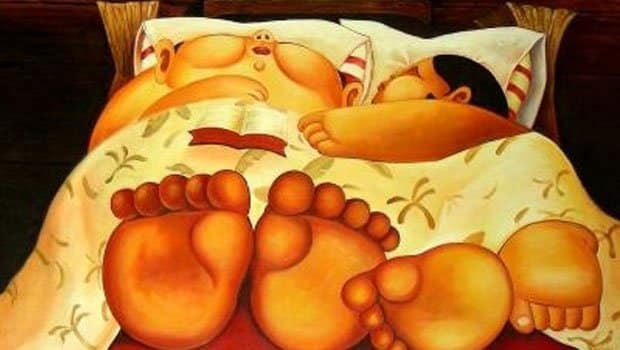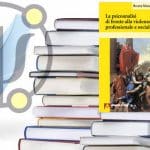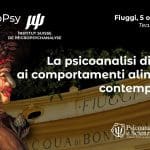In the far 1953 Professor James McConnell, psychologist at the University of Michigan, started his experiments on the planarians, animals belonging to the Tubellaria class.
These worms are the most simple animals which possess, however, what can be defined as a rudimental nervous system with a well defined anatomic structure which is organised in a ganglion of nervous cells, they have a strange characteristic: if they are cut into two, they reproduce themselves into two new individuals, starting from the tail or from the head, indifferently. The tail recreates the head with its essential brain and the head regenerates the tail.
In addition, the planarians are cannibalistic worms: in case of necessity they feed on the individuals of their own species.
Prof. McConnell began a systematic work of conditioning the planarians: he subjected them to a luminous stimulus immediately followed by an electric discharge which made them contract.

At a distance of a few years, in 1956, the professor cut in half a group of conditioned worms and left them to reproduce themselves. The planarians which had conserved the brain in their half and had regenerated the tail showed to have conserved, even in the following generations, the memory of the conditioning stimulus, but the group of researchers remained astonished when they verified that even the planarians that had regenerated starting from the tail and had, therefore, regenerated a new brain, also resulted in being conditioned in the same way: it was evident that the memory of the stimulus was not confined to the rudimental nervous system.
In 1961 professor McConnell together with two assistants resumed their experiments: they took a group of planarians, conditioning them in the usual way, then they cut them into slices, and fed them to other non-conditioned planarians and they discovered that the new planarians responded punctually to the stimuli of the lamp. The experiment was repeated numerous times in a double blinded experiment, scrupulously keeping the identity of the cannibalistic planarians and that of the virgin ones of the control group hidden from the researchers. It resulted evident that, at least in the case of the planarians, the memory was a thing which could be eaten, digested and absorbed; it was clear by now for professor McConnell that the memory was a thing, in other words, a molecule. And so, it could be transferred from one body to another.
You might think that this is a bizarre exception for worms and does not concern superior organisms, the mammals. It is not so.
At the University of Los Angeles, Frank Babich, Allan Jacobson, Suzanne Bubash and Ann Jacobson, after having taught a group of rats to recognise the sound of the click connected to the opening of the food cup and to make them move even in the absence of food, removed the rats’ brains and from these they isolated the RNA. Then they injected it into the peritoneum of other unconditioned rats and the new rats, thanks to the memory of those deceased, demonstrated to be conditioned by the click in the same identical way. (Differential-Approach Tendencies Produced by Injection of RNA from Trained Rats, Allan L. Jacobson, Frank R. Babich, Suzanne Bubash and Ann Jacobson, Science 29th October 1965: Vol. 150 no. 3696 pp. 636-637).
Recently (2009) Arai and coll. concluded an extremely evocative new research: 15 day old mice were exposed to an enriched environment (EE), that included exposure to novel objects, elevated social interactions and voluntary exercise, enhancing long-term potentiation (LTP).
The experiment demonstrated that the enhancing long-term potentiation (LTP) of the synapses strategical for the memory and learning which were developed in the mothers following the precocious experience of exposure to an environment which was abounding in stimuli, was re-found in the following generation even if this had never directly experienced those stimulating conditions. (Arai J. A., et al. Transgenerational rescue of a genetic defect in long-term potentiation and memory formation by juvenile enrichment. Journal of Neuroscience 29 (5), 1496-1502, 2009).
Another interesting experiment finalised in demonstrating the transmission of experiences and of the competences learnt, was realised in 1982 by Philip E. Morris and John M. Beaton of the Neurosciences Program and Department of Psychiatry University of Alabama in Birmingham, USA.
In this experimental study the Authors demonstrated that the administration of a brain extract, taken from mice trained to perform particular tasks, to mice completely lacking in training, determined a notable facilitation of the tasks compared to the control group. The Authors write: “These data suggest that some factor, (specific or non-specific), associated with the task has been transferred”. (Facilitation of an operant task in the rat following injection of whole brain extract, Philip E. Morris, John M. Beaton, Neurosciences Program and Department of Psychiatry University of Alabama in Birmingham, Birmingham, AL 35294, USA, 1982, Pharmacology Biochemistry and Behavior, Volume 19, Issue 2, August 1983, Pages 241-244).
The end of the first starting point for reflection.
Let’s proceed remembering that the first act of nourishment coincides with the beginning of our own ontogenetic life: the spermatozoon, which has undergone the sperm activation during the transit along the female genital ducts, encounters the egg in the ampulla region of the tubes. The acrosome reaction begins: The membrane at the tip of the acrosomal process fuses with the egg’s plasma membrane, activating the acrosomal enzymes which begin to dissolve the zona pellucida of the egg. We can therefore say that life begins with a digesting process!
We could make our psycho-dynamic journey in the binomial mind-nutrition either by following a geographical route, from the mouth to the anus, or a chronological one, from the first days of life to the end of the psycho-sexual development.
In general, the psycho-sexual development of human beings proceeds from a stage in which the objects are lacking (but nowadays we know that internal objects already exists at the moment of the birth, only that these are lived as extensions of the Self) to another stage in which they are present to be incorporated. The stage without objects is that of the primary narcissism and its sexual goals are absolutely auto-erotic.
The first positive instinctive behaviour towards a desired object consists in diminishing the distance between the object and the subject and concludes with swallowing it (later this dangerous activity will be limited to placing the object in the mouth to make it one’s own, to incorporate it). In numerous psychoanalyses I have obtained from the analysed the insight of this very powerful primary cannibalistic pressure that has the goal ‘to put the world inside oneself‘ to eliminate the anguish of the non-Ego. Highly traumatic events which interest this stage, if provoking the disintegration of the immature Ego in formation, lay down the way for schizophrenia in adult age while when at best, so to speak, if they permit the structuring of an Ego that searches incessantly for a primary satisfaction and never tolerates important frustrations that come from the principle of reality, will determine the insurgence of drug-addiction.
Likewise, the first negative instinctive behaviour towards an object retained threatening is that to increase the distance from it and to spit it out (later eliminating it mentally by defecation).
There is no doubt that orality is the base of every incorporation, but similar aims are hypothesised and verified in the material collected in the session for every erogenous zone: we have visual, cutaneous, respiratory and auditive introjections.
In the subject-object dialogue during the oral stage, the ambivalence which is already present during the intrauterine life, is reinforced; ambivalence determined by what Nicola Peluffo has defined as “dynamics of retaining-expelling” and the relation with food becomes a language between child and parents, a ground of confrontation, frequently a battle ground.
A patient who was able to return to a sexual activity after 14 years of uninterrupted abstinence thanks to a brief intensive focal psychoanalysis describes his eating disorders in this way: “I could not have my mother, therefore, I have my mother only through food. I do not have a love, a woman, I am not in love: I am still stationary at this image of my mother and to have her always inside me I wolf down food on and on”. It should be said that the young man’s mother left him during the full Oedipus explosion to go and be a wet-nurse in another region.
She gave her coveted breast to another child: an oral, indelible betrayal which was at the same time the fulcrum of an almost unresolvable fixation nucleus.
In reality, that separation determined an anguish of annihilation so powerful that this man could not distance himself from the maternal nest for too long, without feeling an extremely powerful anguish of death from food deprivation.
From this point of view, we must bear in mind that every time an oral ‘wave‘ is reactivated, the relationship with the object becomes a relationship of survival and the removal of that object places the person in a state of anguish of death due to the lack of nutrition. The mother is unique, she is the source of nourishment and her disappearance is like a solar eclipse. There is no other explanation for the anguish that often feeds the suicidal behaviour of many teenagers who establish totally symbiotic relationships (oral) with the object and they literally feel like dying and hopeless when they are abandoned by their loved one.
The food can assume any symbolic function. A patient became obese after the dramatic loss of her child: she could not lose weight, a weight that, we discovered, corresponded exactly to that of her dead son whose death she had not been able to elaborate.
She had incorporated him orally and she kept him in a phantasmal way inside her: no diet functioned until the unconscious representation of the loss materialised itself and the elaboration of the mourning began, fifteen years after the event.
Often, the defensive mechanism of displacement is used, defined by Laplanche and Pontalis as a “… shift of emotions, interest and intensity of a representation from itself to other representations which are originally less intense and are linked to the first one by an associative chain”.

The doctors had spoken of allergy since her infancy but with the modern immunologic methods they had had to surrender to the evidence that not only was there no allergic situation, but not even, what is nowadays defined as, an intolerance.
The turning point of the case (moreover this was only one of the numerous aspects) happened during the analysis of a photograph which showed the patient’s mother feeding her with a spoon. The observation of the iconic detail, aided by a magnifying glass, made the woman relive all her aggressivity derived from the interaction with a falsely present mother, a kind of empty sac which, like an automaton, had started the weaning process with fruit after a period of time in which the baby had been breastfed by a wet-nurse, an affectionate nanny who had saved her from a psychosis.
The disgust for the peach’s peel was the aggressive disgust for her mother, for her inert hand which held a cold spoon that did not transmit any affect. Here is a brief part of the material: “…I don’t eat fruit: the hatred and the disgust which I have for fruit is evidently the same that I have for my mother! [she cries incessantly]
I must have really pissed her off when I didn’t eat my fruit: evidently this was the only way to get my revenge for my foetal malaise in the uterus. I am still as I was in that tummy. Fruit makes me sick, it makes me vomit. It makes me sick! I can’t even manage to touch it! The consistency of the peach makes me sick, particularly when my mother bites one.
I should say: “My mother makes me sick!” and not: “fruit makes me sick”. Otherwise why should a person feel literally desperate only because fruit makes her sick?”.
Food is an unconscious encrypted language: we can think, for instance, of that phenomenon of the compulsory attachment to ‘mum’s food’. As we know many children do not eat anything that does not have the familiar flavour of their mother’s food, not even if it were to be cooked by Gualtiero Marchesi (one of the most notorious chefs in the world).
The attachment to the familiar dishes, the stereotypy of the menu, is a variant of the incestuous attachment to the family phylum, a form of narcissistic safeguard. It is not by chance that this attachment dissolves itself, in the best of cases, in post-adolescence when even the major part of the libido investment is displaced to a member who is external to the family.
Very often, these attempts of individuation-separation are unconsciously hindered by the mothers: the reserves of food given to their children are equal to the free dose given by the pusher to the client who is trying to give up. And, believe me, it is not a joke.
Written by: Quirino Zangrilli © Copyright
Translated by Linda De Nardo
Key words
alimentation
incorporation
displacement
food phobia
Abstract
The psychodynamic origins of eating disorders are connected to intense oral traumas or to the intrauterine life and to the pathogenic alterations of the mother-foetus unconscious dynamic
Nel 2024 riceve il Premio Accademico d’Onore della Accademia Culturale Internazionale Cartagine 2.0.
Doctor Quirino Zangrilli was born in Fiuggi in 1955. Graduated with honours in Medicine and Surgery in 1980, he practices Psychoanalysis, with intensive method, since 1982. He is author of 72 scientific pubblications. He has attended as speaker or president of session to many national and international scientific Conventions. His book “La vita:involucro vuoto” (Life: empty involucre), published by Borla in 1993, has been in use by the Chair of Dynamic Psychology at Turin’s University since 1994. He is the author and founder of the multimedia review “Psicoanalisi e Scienza” (Psychoanalysis and Science), the most read Italian on line review of psychoanalysis. In 2012 he participated as a Speaker at the Scientific Festival of BergamoScienza. In 2013 he illustrated his research on the maternal-fetal interaction in the Special Session of the XI World Congress of Perinatal Medicine in Moscow with his relation “Intrauterine Imprinting”. He is visiting teacher at Moscow Institute of psychoanalysis and training psychoanalist of Swiss Institute of Micropsychoanalysis.
In 2024 he received the Honorary Academic Award of the Carthage 2.0 International Cultural Academy
Le Le Docteur Quirino Zangrilli est né à Fiuggi en 1955. Diplômé avec mention en Médecine et Chirurgie en 1980, il pratique la psychanalyse depuis 1982, en utilisant une technique intensive. Il est l’auteur de 72 livres et publications scientifiques. Il a participé en tant que conférencier ou président de session à de nombreuses conférences scientifiques nationales et internationales. Son livre “La vie : enveloppe vide”, publié par Borla en 1993, est adopté depuis 1994 par la Chaire de Psychologie Dynamique de l’Université de Turin. En 1994, il a reçu le “Prix national Ciociaria de médecine”. Il a conçu et fondé le magazine multimédia “Psicoanalisi e Scienza”, qui est le magazine de psychanalyse en ligne en italien le plus suivi au monde. (Source : Entireweb, Alexa, Google, Virgilio, Arianna., etc.). En 2012, il a participé en tant que conférencier à la colloque scientifique de BergamoScienza. En 2013, il a exposé ses études sur l’interaction materno-fœtale lors de la session spéciale du XIe Congrès mondial de médecine périnatale à Moscou avec le rapport “Intrauterine Imprinting”. Il est chargé d’enseignement au cours de spécialisation de trois ans en psychanalyse, psychothérapie psychanalytique et consultation psychanalytique à l’Université de Moscou. Il est membre didacticien de l’Institut Suisse de Micropsychanalyse et de la Commission pour la Pratique de celui-ci.
En 2024, il reçoit le Prix Académique Honoraire de l’Académie Culturelle Internationale Carthage 2.0.
В 2024 был награжден Почетной академической премией Академии Международной Культуры «Карфаген 2.0».











